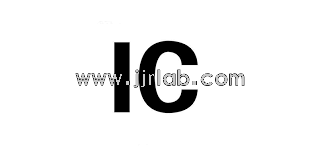
FCC SDoC and FCC ID Certification Labeling Requirements
FCC stands for the Federal Communications Commission, which is the governing body in the United States. FCC certification is a mandatory certification in the U.S. that applies to electronic and electrical products operating in the 9 kHz to 3000 GHz range, addressing issues related to radio frequency interference, including radio, communication, and other wireless interference concerns. Products regULated by the FCC cover categories such as AV, IT, radio, and engineering medical devices, among others.
FCC Certification Types:
1. FCC Supplier's Declaration of Conformity (fcc sdoc)
Manufacturers or importers ensure their products undergo necessary testing in a laboratory according to regulatory requirements, confirming compliance with relevant technical standards, and retaining test reports. The FCC may require the submission of device samples or test data. Products must have a U.S.-based responsible party; devices without one must apply for an fcc id as an alternative certification method. The responsible party must issue a declaration of conformity document.
2. FCC Certification (FCC ID)
Products must pass testing in an FCC-recognized laboratory and obtain a test report. Technical documentation, including product photos, circuit diagrams, block diagrams, user manuals, etc., along with the test report, is submitted to an FCC-recognized certifying body (TCB) for review and approval. Once the TCB confirms the materials, a certificate is issued, and the applicant is authorized to use the FCC ID. First-time applicants must first apply to the FCC for a GRANTEE CODE (company number). Once the product passes testing and certification, the FCC ID is marked on the product.
FCC Certification Type: Mandatory
- Local Voltage: 110V, 60Hz
- Factory Inspection: None
- Certificate Validity: No expiration
FCC Label Format:
This device complies with Part 15 of the FCC Rules.
Operation is subject to the following two conditions:
(1) This device may not cause harmful interference.
(2) This device must accept any interference received, including interference that may cause undesiRED operation.
FCC sdoc Declaration Label:
1. Supplier's Declaration (SDoC) Label
The product, packaging, or manual must feature the above FCC declaration label.
The product label may voluntarily display the fcc logo.
fcc id label Format:
The FCC ID label must include basic information such as the manufacturer, product name, model, specifications, and the FCC/ic id number (required).
FCC ID = Grantee Code + Product Code
Additionally, the following declaration must appear:
This device complies with Part 15 of the FCC Rules. Operation is subject to the following two conditions:
(1) This device may not cause harmful interference, and
(2) This device must accept any interference received, including interference that may cause undesired operation.
If the size of the product label prevents the full declaration, it must be included in the user manual, packaging, or on a removable label.
User Manual – FCC Warning:
The user manual must include the following warning:
Any changes or modifications not expressly approved by the party responsible for compliance could void the user's authority to operate the equipment.
Note: The instruction manual - FCC instruction manual must contain the following warning
Any Changes or modifications not expressly approved by the party responsible for compliance could void the user's authority to operate the equipment.NOTE:This equipment has been tested and found to comply with the limits for a Class B digital device,pursuant to part 15of the FCC Rules.These limits are designed to provide reasonable protection aqainst harmful interference in a residential installation.This equipment generates,uses and can radiate radio frequency energy and,if not installed and used in accordance with the instructions,may cause harmful interference to radio communications.However,there is no guarantee that interference will not occur in a particular installation.If this equipment does cause harmful interference to radio or television reception,which can be determined by turning the equipment off and on,the user is encouraged to try to correct the interference by one or more of the following measures:-Reorient or relocate the receiving antenna.-Increase the separation between the equipment and receiver.-Connect the equipment into an outlet on a circuit different from that to which the receiver is connected.Consult the dealer or an experienced radio/TV technician for help.RF exposure warning This equipment must be installed and operated in accordance with provided instructions and the antenna(s)used for this transmitter must be installed to provide a separation distance of at least 20 cm from all persons and must not be co-located or operating in conjunction with any other antenna or transmitter.End-users and installers must be provide with antenna installation instructions and transmitter operating conditions for satisfying RF exposure compliance.
Email:hello@jjrlab.com
Write your message here and send it to us
 Canada ISED Certification (IC Certification) Analy
Canada ISED Certification (IC Certification) Analy
 CSA C22.2 No.42 Compliance Test Report for Amazon
CSA C22.2 No.42 Compliance Test Report for Amazon
 FCM Food Contact Materials Compliance Certificatio
FCM Food Contact Materials Compliance Certificatio
 EN14350 Testing for Amazon Baby Feeding Products
EN14350 Testing for Amazon Baby Feeding Products
 Infant Support Pillow 16 CFR 1243/1242 & ASTM
Infant Support Pillow 16 CFR 1243/1242 & ASTM
 BRM Registration Card Under CFR Part 1130 Regulati
BRM Registration Card Under CFR Part 1130 Regulati
 How to get a D-U-N-S® Number for US FDA Registrati
How to get a D-U-N-S® Number for US FDA Registrati
 Household Massage Devices Compliance in the China
Household Massage Devices Compliance in the China
Leave us a message
24-hour online customer service at any time to respond, so that you worry!




